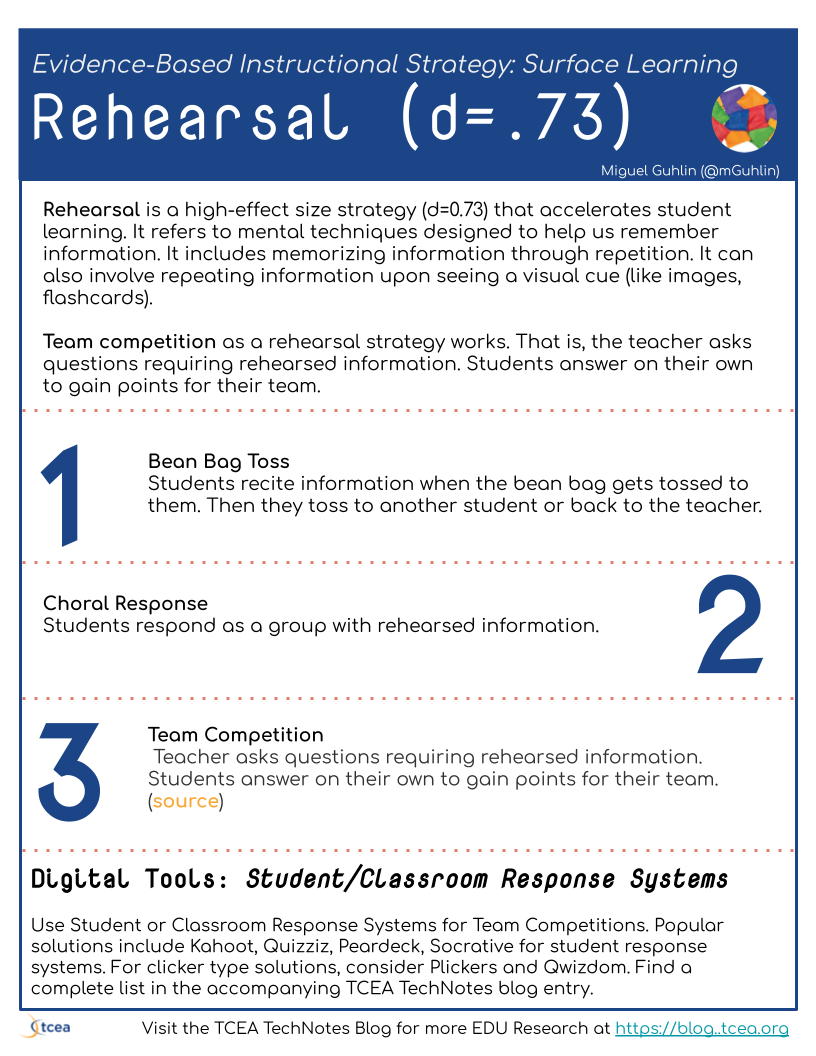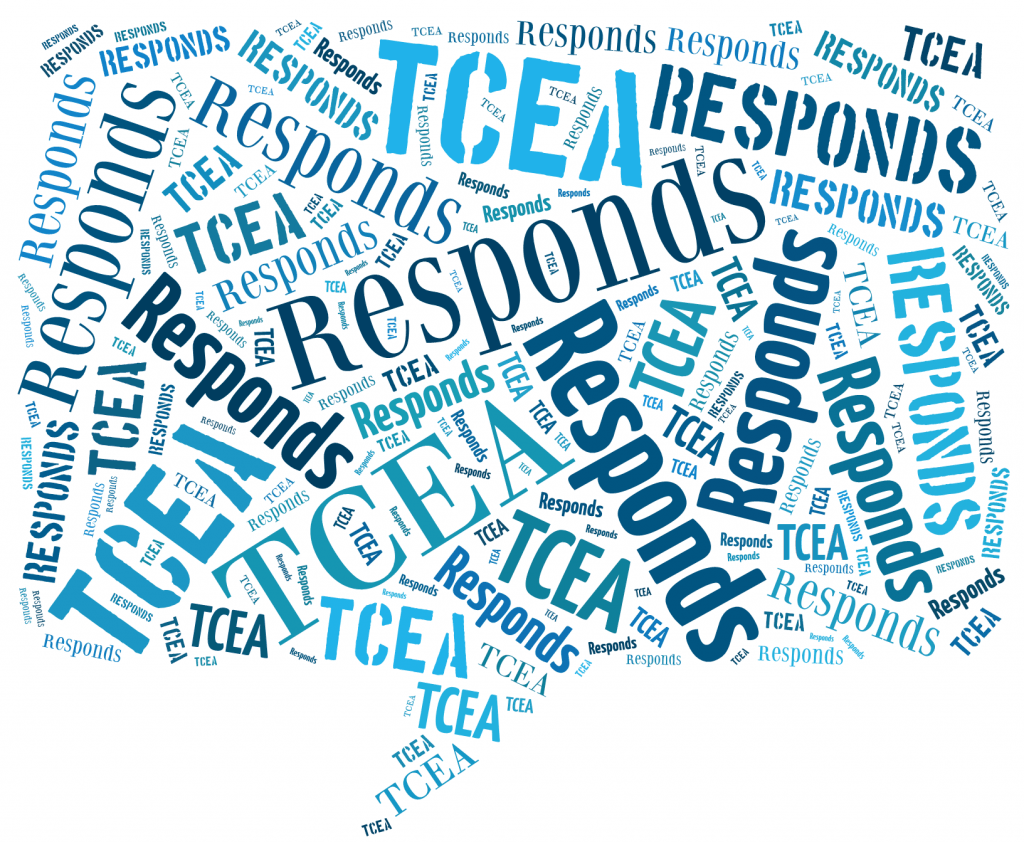Dear TCEA Responds:
Are there apps that have students respond to a teacher’s multiple-choice questions? I need it to show the results in real-time in the form of a graph.
Thank you, Cindy
Dear Cindy,
Thanks for your question. This question recently came up in one of the Facebook groups I visited. Please allow me to share some of the classroom response systems mentioned.
Before I do, though, I have to share some of the qualities most of these systems share. Those include:
- Support for various question types
- Instant feedback
- Automatic grading and reporting
- Work on radio frequency or via WiFi
- May need a device for students or run as an app on a student-owned device, or no device at all
These can be costly systems to put in place. As a technology director, I often encouraged more in-depth learning activities. That said, teachers can use classroom response systems for low-stakes, practice testing. Why is practice testing important?

How the Brain Works
In his book, “The Fundamentals of Teaching,” Mike Bell makes this point:
When repetition leads to long-term memories, there are physical changes in the brain. Brain memories disappear very quickly unless they are repeated. Our brains are made up of billions of nerve cells or neurons, all connected together. We form memories when some of these pathways become strengthened by being repeatedly used.
How do you strengthen these pathways? Through repetition. Repetition leads to what Bell describes as “long-term potentiation.” This isn’t just his label, though. Consider this:
Long-term potentiation (LTP) is a process involving persistent strengthening of synapses that leads to a long-lasting increase in signal transmission between neurons. It is an important process in the context of synaptic plasticity. LTP recording is widely recognized as a cellular model for the study of memory. (Source: Science Direct)
To Teach is to Learn Twice
When I read Mike Bell’s book, I had already read Zaretta Hammond’s book. In her book, “Culturally Responsive Teaching and the Brain,” Zaretta Hammond expands on this idea. She writes:
When the brain is learning something new, it clusters neurons together to create a neural pathway…when we go back and forth along this pathway, it helps drive new learning deeper into long-term memory until it becomes automatic or deeply understood.
The brain helps neurons talk to each other faster along these neural pathways through the process of myelination, where it wraps the body of the neuron with layers of a fatty substance called myelin. Myelination makes it easier for the brain to do more complex work because the fat allow the chemical and electrical impulses to travel across the neuron faster.
“When we don’t practice or use new dendrites shortly after learning,” Hammond says, “our brain prunes them.” Imagine your brain saving resources, reabsorbing unused dendrites.
By sharing these two descriptions that underscore repetition for long-term information retention, I hope to strengthen my own neural pathways. Doesn’t this give Joseph Joubert’s quote a whole new meaning?
“To teach is to learn twice.”
Team Competition and the Rehearsal Strategy
Rehearsal is a concept I’ve described before. It is a high-effect size strategy (d=0.73) that accelerates student learning. It refers to mental techniques designed to help us remember information. It includes memorizing information through repetition. It can also involve repeating information upon seeing a visual cue (like images, flashcards).
For the purposes of this blog entry, team competition as a rehearsal strategy works. That is, the teacher asks questions requiring rehearsed information. Students answer on their own to gain points for their team.
Classroom response systems can facilitate point collection for their team.
Student vs Classroom Systems
Curious about what classroom response systems may be available for use? Before we get to those, let’s review a related category, Student Response Systems. Student Response Systems often work as part of another solution. This means you’re not relying on a “clicker” device from the vendor. Instead, you use a smartphone, Chromebook, and/or iPad.

What’s more, these tools work great with other high-effect size strategies, including our focus rehearsal through team competition.
Some popular ones include:
- Desmos. Math-focused responses. Learn more.
- Edulastic. Provides pre-built assessments.
- GoFormative. Watch this series of videos.
- Peardeck. Allows for interactive questions in multiple formats. Read this blog entry for more information.
- Poll Everywhere.
- Smart’s Lumio. Watch video overview.
- Socrative. Read this implementation document to learn more.
- Vevox. Live polling solution for face to face and hybrid. Learn more.
- Wooclap. Watch this short tutorial.
Want to learn about more or similar tools? Explore these TCEA TechNotes blog entries. Many tools (Kahoot, Quizziz) are also relied on for quick low-stakes assessments. Now, let’s take a look at Classroom Response Systems.
Classroom Response Systems
Here’s a shortlist of Classroom Response Systems. These systems often come with their own student device. They connect to each other via radio frequency or infrared beam. Rather than work with your existing technology, students get a clicker.
Since Classroom and Student Response systems are often confused, let’s define them for clarification. If there is a clicker device running on radio frequency, it’s a classroom response system. If the clicking happens in a browser or app, it’s a student response system.
Remember, the key difference between the previous list and the one below is simple. Classroom Response Systems are not app or browser-based.
Here are a few you can use:
- H-ITT Classroom Response Systems. Comes with a radio frequency clicker, require batteries, and comes in a class pack.
- Plickers. This system doesn’t rely on students needing devices, but relies on cards instead. The teacher is also limited to five multiple choice questions. Once responses are collected, answers appear in a bar graph. Watch this video for an overview.
- TurningPoint Interactive Polling. See how one education organization relies on this solution.
- Qwizdom. Includes a plugin for Powerpoint that allows for instant feedback, grading and reporting. Classroom clickers rely on radio frequency (RF). Watch video.
Thanks for your question, Cindy. As you can see, there are many different types of response systems available to you. A few I didn’t mention here are included in another TechNotes blog entry, Buzz Me In: Remote Learning Buzzers and Scoreboards.
Finally, here’s a quick summary of educational research and a digital tool recommendation.



1 comment
Vidmonials goes one step ahead and lets its customers share movies with consumers, colleagues, and other business partners easily. Users can record their voice and screen simultaneously, or stay connected with other colleagues regardless of the location.